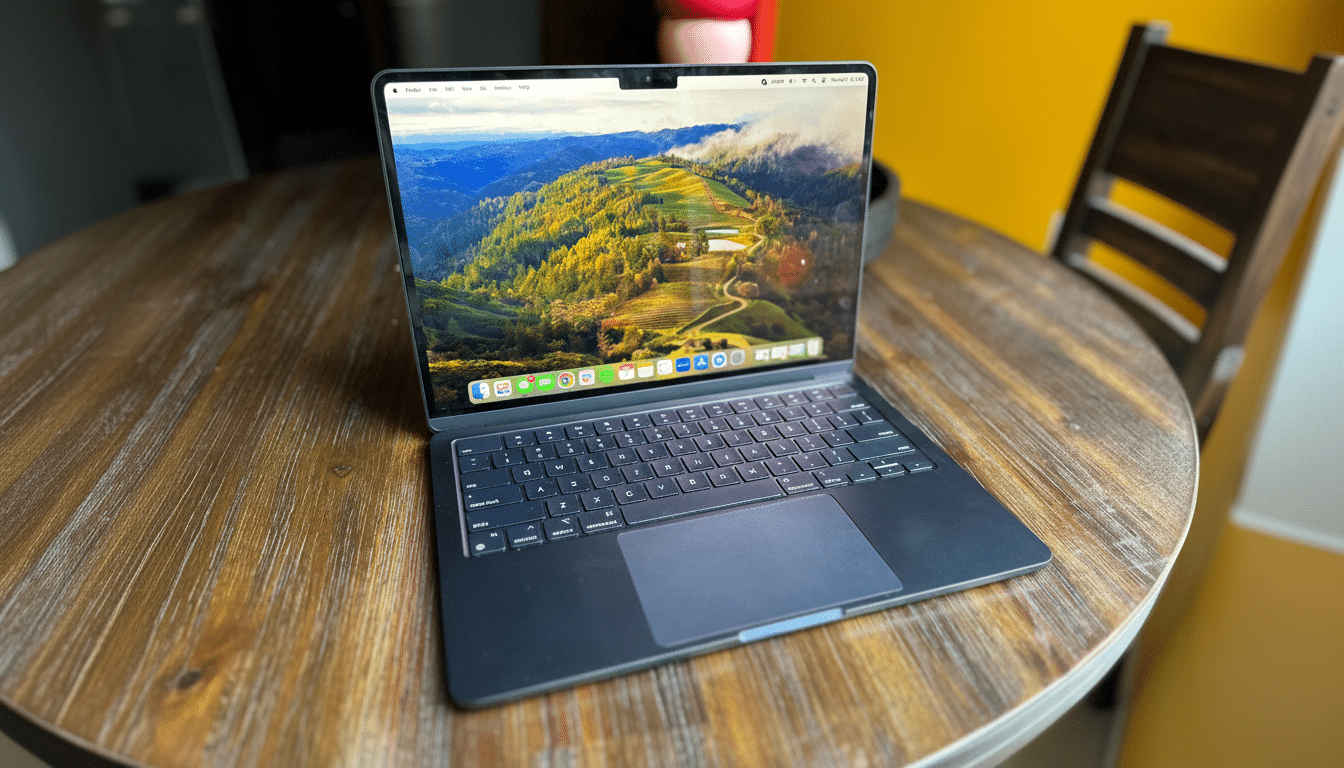Apple is working on a new MacBook that falls “well below $1,000,” aimed squarely at the Chromebook and budget Windows laptop market. The device is in early production with overseas suppliers and could debut as soon as the first half of 2026, according to Bloomberg. The lower price is rumored to be made possible by a smaller screen and an iPhone-class A-series chip instead of Apple’s M-series silicon.
Why Apple needs a cheaper MacBook to reach key markets
Apple’s current entry, the 13-inch MacBook Air, begins at $999 for a 256GB model — competitive on polish but not price. In education and cost-conscious markets, the range under $800 is where volumes are. Futuresource Consulting has long pegged Chromebooks at about 70% share of the U.S. K–12 notebook market, while IDC and Canalys data have consistently reported that devices priced under $1,000 make up the preponderance of global notebook shipments.
- Why Apple needs a cheaper MacBook to reach key markets
- What Apple’s A-series silicon could realistically encompass
- Smaller LCD screen size and other design compromises
- Who Apple’s cheaper MacBook model is designed for
- Can this model undercut Chromebooks on price and value?
- Expected timing and what observers should watch for

Apple doesn’t have to compete with $200 Chromebooks for its performance to improve.
MacBook Lite: “Imagine a durable, long-lasting MacBook anyone can afford,” Konahin writes. It’s an idea that might appeal to students, families, and first-time Mac buyers who want macOS on a budget without the high-end tax of the Air or Pro line.
What Apple’s A-series silicon could realistically encompass
Switching to an A-series processor in the same vein as what powers iPhones and some iPads could lower component costs while providing strong single-thread performance and great efficiency. Yes, both Apple’s A-series and its M-series share architectural DNA, high-performance and efficiency cores, fast media engines, and increasingly sophisticated NPUs in the latest generations. Where A-series often lags M-series, though, are sustained multicore workloads, GPU scale, memory bandwidth, and I/O capabilities that pro apps lean on.
For web-first work, productivity, and streaming, an A-series MacBook would probably feel snappy while still keeping the lights on. Apple already rates the current MacBook Air models for up to 18 hours of video playback; a smaller-sized chassis that has phone-class efficiency might help real-world battery life crawl deeper into multi-day territory if you’re just going easy on it. The compromise, however, is that intense creative work — such as 4K video timelines, large codebases, or machine learning models — will still be the purview of Air and Pro M-series systems.
Smaller LCD screen size and other design compromises
Apple may go with a less expensive LCD and lop off display real estate (perhaps down to 12 inches), Bloomberg reports. Think of these as trade-offs compared with the 500-nit Retina panels and wide color coverage on the Air, made to reach a lower price point. The payoff is a lighter, ultra-portable design, along the lines of the 12-inch MacBook from 2015 (which suggested there’s an appetite for a featherweight Mac even if it has fewer ports and moderate performance).
Other cost-saving levers may be a pared down port layout, base storage tuned for the cloud-first user, and minimized speaker/camera systems. The trick is going to be how Apple can keep its trademark build quality and keyboard and trackpad experience while cutting material and components.

Who Apple’s cheaper MacBook model is designed for
The positioning seems to be fairly simple: students, casual users, and households that prioritize macOS, iCloud, iMessage, and AirDrop over raw compute muscle. It also provides an on-ramp for anyone who isn’t interested in swapping a laptop computer with an iPad, even as iPadOS gets closer to desktop-style workflows.
Marketing might echo Apple’s current segmentation: MacBook Pro for power users, MacBook Air for mainstream performance and battery life, and this new model as the most affordable Mac notebook for everyday tasks. We’ll just have to make sure it’s perceived to be clearly better than a Chromebook but not eating the Air’s lunch.
Can this model undercut Chromebooks on price and value?
Almost certainly not at the absolute bottom. Through fleet management via Google Admin, school districts are able to purchase Chromebooks for a fraction of the cost — $200 or $300 in bulk — with total cost of ownership factored into that price. Apple’s play is more likely going after value than parity: multi-year macOS updates, strong resale values, solid privacy defaults, and cohesive ecosystem features that lend themselves toward stretching a purchase further over time.
Apple’s efficiency, battery life, and build consistency can be compelling versus Windows devices in the $500–$1,000 range. Keep the quality of Apple’s keyboards (and its trackpads), ensure the system runs quietly with low heat and no constantly running fans, and it would go a long way toward setting a standard for daily use.
Expected timing and what observers should watch for
Bloomberg’s report mentions early production and a potential first-half 2026 unveiling, which is the right time for education buying cycles.
Watchers of the supply chain will search for clues from assemblers that have historically built Mac notebooks, like Quanta or Foxconn, along with regulatory filings and changes to developer logs that sometimes show new device classes.
If Apple can give people a sub-$1,000 MacBook that still feels indelibly like a Mac, it would grow the installed base of Macs without taking away from the Air’s appeal. The balance is delicate, but the payoff — more of a share in education and entry-level consumers — is big enough to warrant a bold A-series-powered swing.

